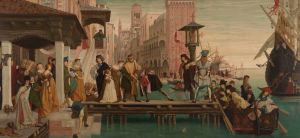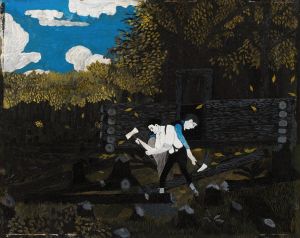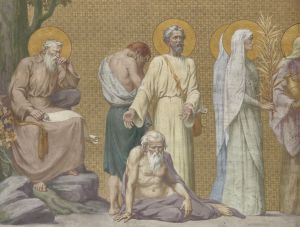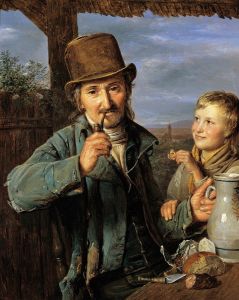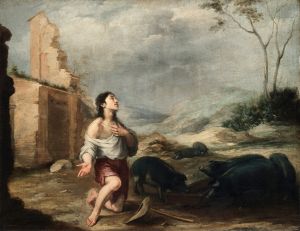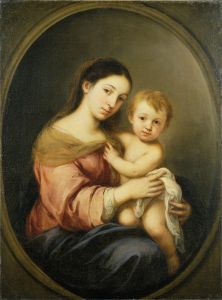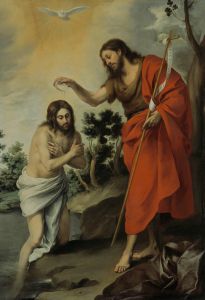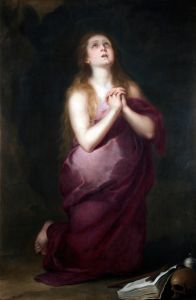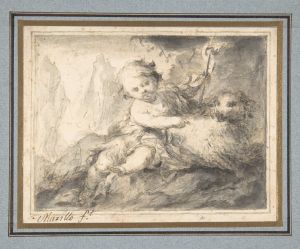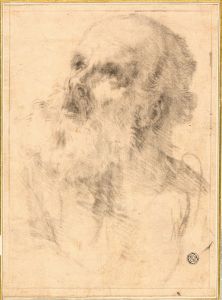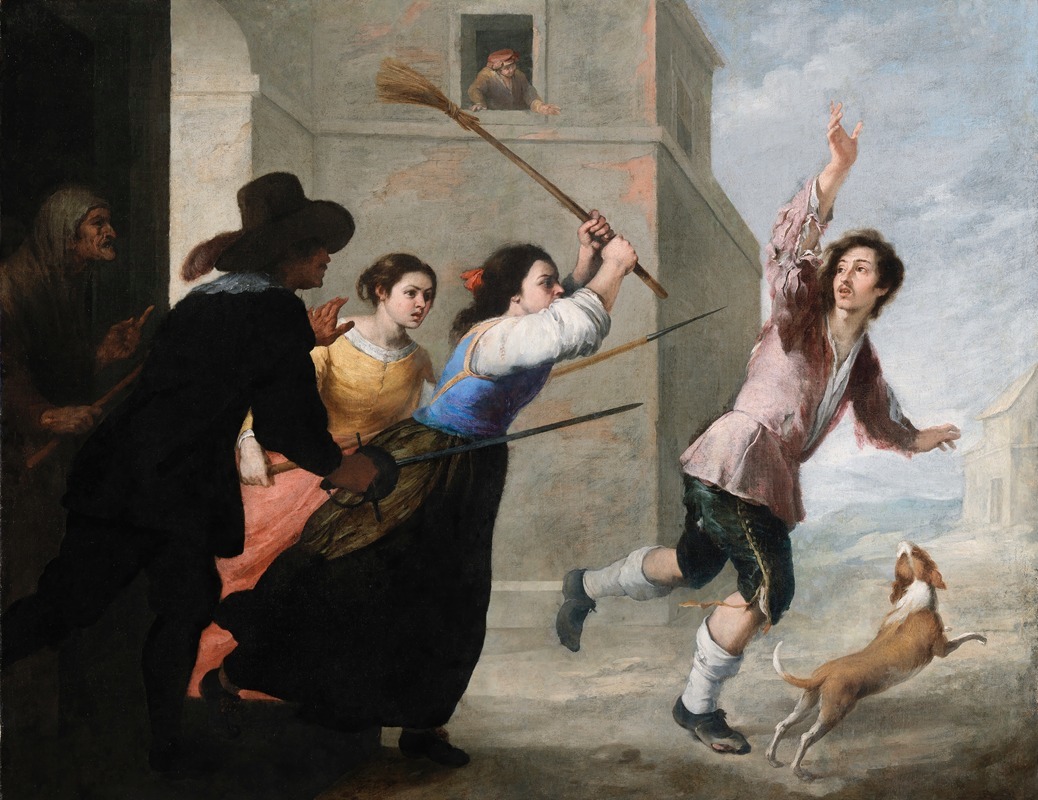
The Prodigal Son Driven Out
A hand-painted replica of Bartolomé Estebán Murillo’s masterpiece The Prodigal Son Driven Out, meticulously crafted by professional artists to capture the true essence of the original. Each piece is created with museum-quality canvas and rare mineral pigments, carefully painted by experienced artists with delicate brushstrokes and rich, layered colors to perfectly recreate the texture of the original artwork. Unlike machine-printed reproductions, this hand-painted version brings the painting to life, infused with the artist’s emotions and skill in every stroke. Whether for personal collection or home decoration, it instantly elevates the artistic atmosphere of any space.
Bartolomé Estebán Murillo, a prominent Spanish Baroque painter, is renowned for his religious works, genre scenes, and depictions of everyday life. One of his notable works is "The Prodigal Son Driven Out," which is part of a series of paintings illustrating the biblical parable of the Prodigal Son. This series is celebrated for its narrative clarity, emotional depth, and the artist's ability to convey complex human emotions through his mastery of composition and color.
"The Prodigal Son Driven Out" is one of six paintings that Murillo created to depict the story of the Prodigal Son, a parable from the Gospel of Luke in the New Testament. The parable tells the story of a younger son who asks his father for his share of the inheritance and then squanders it in a distant land. After falling into poverty and despair, he returns home, where he is welcomed back by his forgiving father. Murillo's series captures the various stages of this narrative, emphasizing themes of repentance, forgiveness, and redemption.
In "The Prodigal Son Driven Out," Murillo focuses on the moment when the young man is expelled from his home, marking the beginning of his journey into the world. The painting is characterized by Murillo's typical use of soft, warm colors and his ability to create a sense of movement and emotion. The composition is carefully arranged to draw the viewer's attention to the central figures, highlighting the tension and drama of the scene.
Murillo's skillful use of light and shadow adds depth and dimension to the painting, enhancing the emotional impact of the narrative. The expressions on the faces of the characters are rendered with great sensitivity, capturing the complex emotions of the moment. The young man's expression reflects a mixture of defiance and uncertainty, while the figures around him convey a range of emotions, from anger to sorrow.
The painting is also notable for its attention to detail, with Murillo's careful rendering of clothing, architecture, and landscape elements contributing to the overall realism of the scene. This attention to detail is a hallmark of Murillo's work and reflects his ability to combine naturalism with a deep understanding of human emotion.
"The Prodigal Son Driven Out" and the other paintings in the series were originally created for the Hospital de la Caridad in Seville, a charitable institution that provided care for the poor and sick. The series was intended to convey moral and religious lessons to the viewers, aligning with the charitable mission of the institution. Today, these paintings are considered masterpieces of Baroque art and are admired for their narrative power and artistic excellence.
Murillo's work, including "The Prodigal Son Driven Out," has had a lasting impact on the art world, influencing subsequent generations of artists. His ability to convey complex human emotions and his mastery of composition and color continue to be celebrated by art historians and enthusiasts alike. The painting remains an important example of Murillo's contribution to the Baroque period and his enduring legacy in the history of art.





